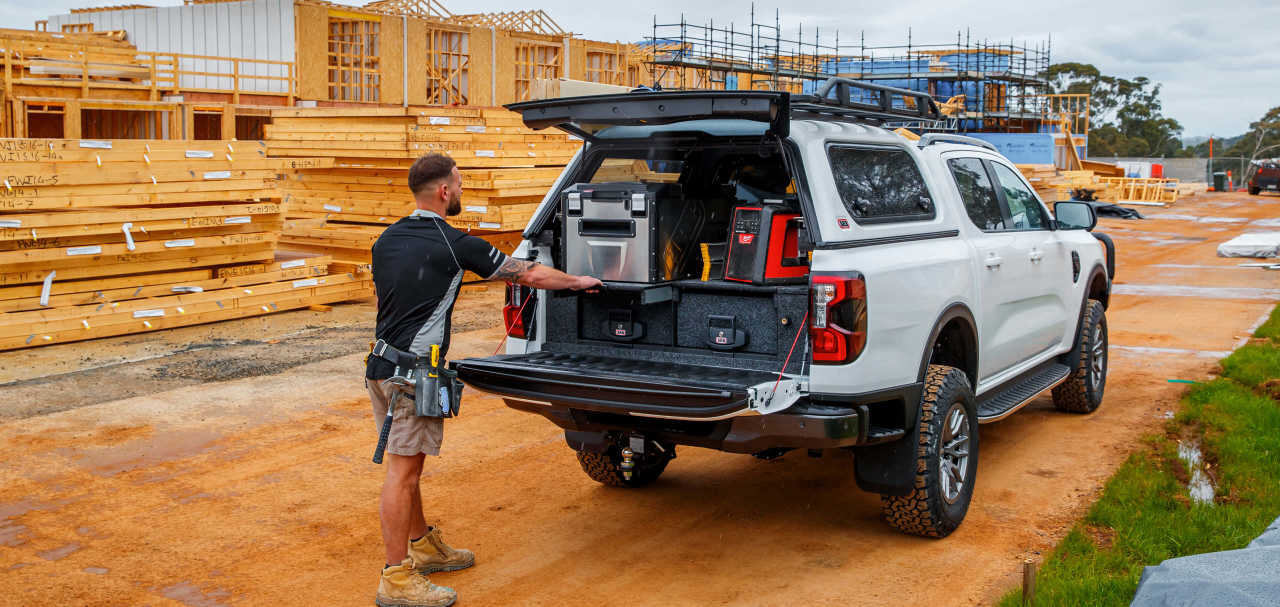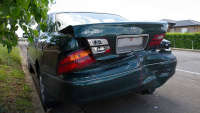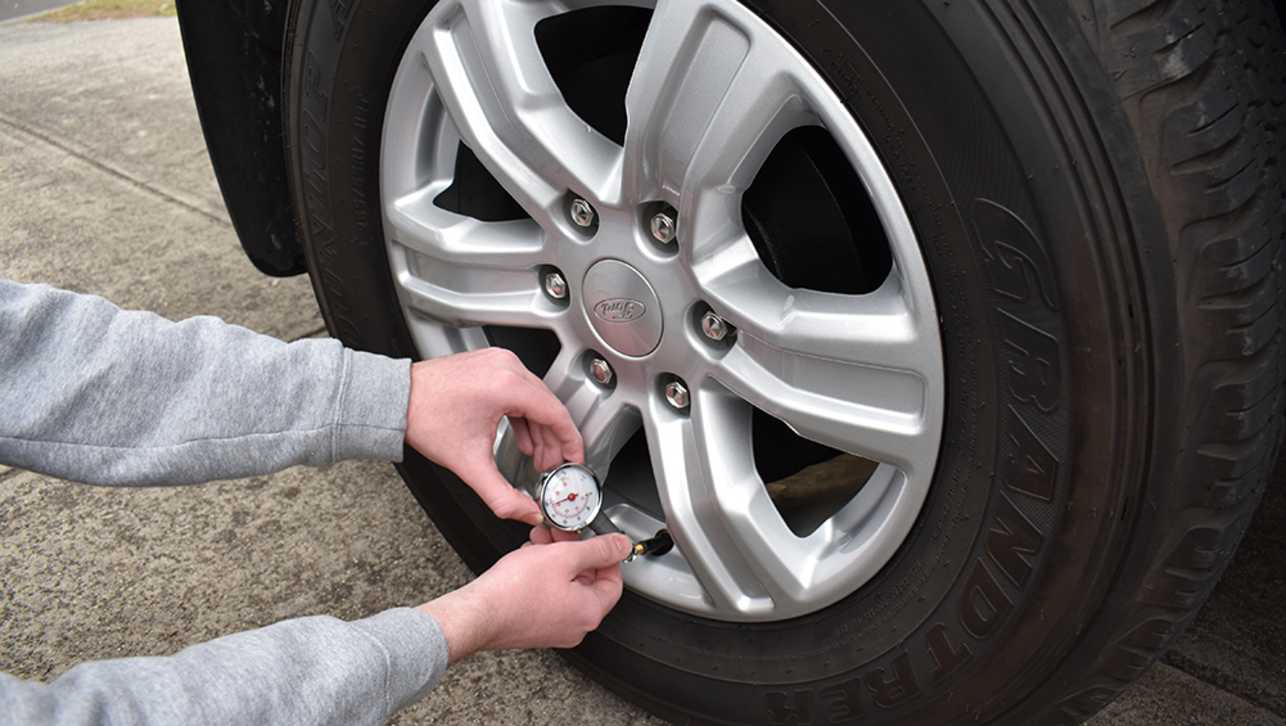Maintaining correct tyre pressures can optimise tyre life and minimise fuel consumption. However, there are also compelling safety reasons for doing so, particularly if your work or recreational pursuits require carrying and/or towing heavy loads.
For example, you might think that because your dual cab ute has a hefty one-tonne payload rating and 3.5-tonne braked towing capacity, its tyres as specified by the vehicle manufacturer are more than capable of handling these loads.
That’s true. However, tyre load ratings are based on the assumption that cold tyre pressures recommended by tyre manufacturers are maintained, because they are critical in allowing tyres to evenly distribute your vehicle’s heavy payload and tow-ball download through their sidewalls and across their tread faces.
Incorrect tyre pressures can not only compromise your tyre load ratings but also cause uneven wear, less grip and poor handling. And, in worst cases, complete tyre failure which can have catastrophic results particularly for heavily-loaded vehicles travelling at highway speeds.
So, if you think tyres are just black, round and boring, it’s worth your safety and that of your passengers and other road users, to take a little time to understand the importance of correct tyre pressures.
Dangers of under-inflation and over-inflation
Driving on a tyre that’s under-inflated can increase fuel consumption due to greater rolling resistance caused by more of the tyre being in contact with the road. However, higher fuel bills are the least of your worries if you’re carrying and/or towing heavy loads.
Under-inflation can also cause excessive flexing of the tyre sidewalls (the heavier the load, the worse the flexing) while the centre of the tread-face can distort to such an extent it becomes slightly concave and no longer in contact with the road. This not only concentrates more weight on the outer edges of the tread-face, causing less grip and uneven wear, but on wet roads can cause the tyre to skim or ‘aquaplane’ on standing water, losing all contact with the road and complete loss of control.
This excessive flexing and distortion can also weaken the tyre’s internal reinforcement and generate excessive heat, which together greatly increase the chance of a rupture and rapid deflation or ‘blow-out’.
Over-inflated tyres can be just as damaging and dangerous, as the tread-face can instead ‘balloon’ into a convex shape that leaves only the centre of the tread in contact with the road, again reducing grip and causing rapid uneven wear.
Over-inflation can also increase vehicle wear by transmitting more of the impact from potholes and other road irregularities through the suspension, which can be particularly bruising when under heavy loadings. They also create a very harsh and uncomfortable ride.

Good tyre pressure maintenance
Tyres with even half their recommended pressures can still hold their shape, particularly light truck and 4x4 tyres with their robust sidewalls and treads, so visual checks are not good enough if you’re serious about maintaining correct tyre pressures.
As a general guide, tyres lose about one psi (pounds per square inch) of pressure each month through natural causes. In other words, if you started with the correct pressures but didn’t check them for say six months, they could be at least 6psi below where they should be.
If that doesn’t sound like much, tests have shown that only a 6psi difference from recommended pressures can reduce tyre life by thousands of kilometres. And a difference of 14psi can add a whopping 14 metres (that’s 3-4 car lengths) to braking distances on wet roads.
Tyres can also lose pressure due to leaking valves, so always make sure they are replaced when new tyres are fitted and that all valve caps are also screwed on tightly to keep out grit that can damage the valve seals. They can also help to arrest small leaks in faulty valves.
In any case, you should always check and adjust your tyre pressures at least once a month, but ideally each time you stop to refuel and always before you set off with a heavy load.
The most accurate and convenient way is with a quality tyre pressure gauge and portable air compressor, which come in different configurations and are readily available from automotive retailers.
If you can’t fork out for both of these items, then buy the pressure gauge and use the free inflation facility at a local petrol station. That way, you can be sure that your tyre pressure readings are accurate, as pressure readings at public facilities could be compromised due to lack of maintenance or damage.
Most importantly, always check and adjust your pressures when the tyres are cold, either before you leave home in the morning or after having driven no further than your local service station. That’s because rolling tyres generate heat and as the air inside gets hotter it expands and raises the pressures, resulting in false ‘cold’ readings.
Finding the right numbers
Cold tyre pressures recommended by vehicle manufacturers are found on tyre placards, which are usually displayed inside the driver’s door opening but sometimes inside the fuel filler flap or in your vehicle owner’s manual.
The tyre placard usually displays two recommended pressures; one for unladen travel and a higher one for when the vehicle is loaded. These placards can look more complex on 4x4 and light commercial vehicles as they often display multiple wheel/tyre sizes for the same vehicle. So, in those instances, just match the size shown on your tyre sidewall with the same one on the placard to determine the correct pressures.

While reading the information on your tyre’s sidewall, you might also find a maximum pressure rating which is much higher than that shown on the placard. That’s because it allows a safety margin for significant increases in pressure caused by heat.
So, if you inflate a tyre to that maximum pressure rating when cold, it has no capacity to absorb pressure increases when it heats up, which could result in a blow-out. So, never inflate a tyre to its maximum pressure rating!
We hope that’s enough motivation to pay closer attention to your tyre pressures, particularly if you carry and/or tow heavy loads, because tyres are the only thing between your heavily-loaded vehicle and the road. Think about that the next time you’re travelling at highway speeds and loaded to the max with a heavy trailer in tow.




.jpg)
.jpg)


.jpg)

.jpg)

.jpg)

.jpg)

.jpg)

 copy.jpg)


.jpg)

Comments